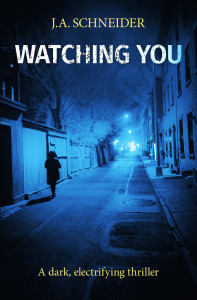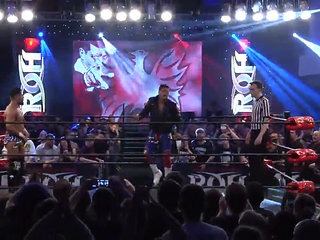The world is ending! No, the world has ended. Death is upon us. But death is not the end. I’ve scoured some of the most popular science fiction and fantasy magazines available online and these are my thoughts. (Possible spoilers ahead!)
CLARKESWORLDIssue #126 — Mar. 2017
“Two Ways of Living” by Robert Reed
There’s a lot to envy about the main character in this story. If not because he has the money and resources to “hibernate” for years at a time until we’ve terraformed and colonized the solar system, but because when he wakes, he gets to eat whatever he wants in innumerable quantities without any legacy of ill side-effects. What a deal!
Really though, “Two Ways of Living” is deeper than caloric indulgence and nosy neighbors, though it’s perfectly okay to read it for that, too. I enjoyed it because, while it’s caked in decadence, it still manages to wrangle with the simple fact that the protagonist is choosing a way of life that isolates himself from the present. He’s also putting himself through hell, at least initially, when he wakes up from these naps:
Feasting, I admit to myself that this is the worst up-time so far. Obviously, I reached too far. More reasonable goals are needed. That’s the lesson here. Life is tiny but full of huge choices, and I make a few of those before the Reuben sandwich arrives.
Is this all worth the future?
He meets two oddball characters during these down/up-times, his neighbor, Glory, and her talking dog, Salvation. There’s more to Salvation than just whatever device or technology allows him to speak, but I wasn’t able to peg the dog’s motivation by the end of the story—he was more helpful near the beginning and suddenly by the end his demeanor is much different. I suppose the change can be chalked up to the time that has passed between our protagonist’s naps. But how much has our protagonist changed, or will he never? A fun story.

“Waiting Out the End of the World in Patty’s Place Cafe” by Naomi Kritzer
Apocalyptic fiction is only going to flourish under an unpopular, and at times unstable, government, so I’m not surprised to see it’s still publishing in healthy numbers. This short isn’t the only tale of apocalypse in Clarkesworld this month, but for me it hit home the hardest. It also evoked a tightness around me, as if I were swaddled in this fictionalized hysteria. The story itself does mostly what’s suggested by the title: a group of people wait out the world’s end in a diner. There’s something more immediate to the context than just asteroids and gasoline shortages, however. For certain communities right now—here we’re introduced to not only a nervous gay daughter but also a trans woman and her husband—the world is teetering on that dangerous thin line between impact and near-miss. What is going to happen to us? The ambiguity alone is enough to keep you up at night. It does for me, at least.
Kritzer gives us a few heartbreaking lines as well. This one “The thing was, I had a partner—that’s what we called our spouses before we could get legally married, I don’t know if kids these days remember that,” is both tenderly nascent for its optimistic projection and gut-wrenchingly tragic for what we know is coming, both in the story and real life. “End of the World” has hit the zeitgeist for people among the LGBTQ+ communities. The result is a fantastic magnification of our collective speculative fiction: are we all just waiting for impact or will this one bluster on by? Regardless, it’s a reminder that we must come together in times like these and find solace within each other and our loved ones. Don’t wait it out alone.

“Crown of Thorns” by Octavia Cade
Another apocalyptic story, but this one’s event is post rather than Kritzer’s prior, and it’s stranger. Here the apocalypse arrives in three layers: a plague has swept across the world; a swarm of starfish have invaded and devoured a reef; a parent has lost his daughter. This complexity gives Cade plenty opportunity to pull apart the theme and then reassemble it and analyze it in another way, constantly jogging us forward between this jumble of plague/swarm/loss of a child to masterful effect. You can feel it all here, the hopelessness, the grief, in this passage toward the beginning:
Diving again and again, in clear warm water with spikes beneath, with stars, and so focused on seabeds and the possibility of resurrection that the other destruction taking place had seemed a distant thing, unnoticed at first, or at least not taken seriously until the silence began to spread, to became too monstrous to be ignored.
The world, these layers have changed irreparably. How will the main character deal and adapt, or won’t he?
Cade’s sidebar bio lists a PhD in science communication among her repertoire, and it shows. The language is a blend of scientific spice, barbed banter, and striking imagery. I particularly like the attention given to the starfish, which normally might be glazed over with generic characterization (how hard is it to visualize a starfish when one can just write “starfish”?), but are shown more affection here. The descriptions of the way they overwhelm the reef and the toxic remedy used to kill them one by one carry authority, too. This world feels real, which makes it all the more unsettling. Definitely check it out.

“Goodnight, Melancholy” by Xia Jia (translated by Ken Liu)
This one caught me by surprise. It starts off innocently enough, with a section about the protagonist introducing a sort of therapy AI called Lindy to her robot seal called Nocko. Next we jump into a section about Alan Turing and his talking machine, Christopher. These sections swing back and forth from Lindy to Alan, between AI and proto-AI, for the course of the entire novelette, and it’s this juxtaposition that really makes the story shine. I found the Alan sections to be more enthralling and emotional a majority of the time, especially his second section. I was already familiar with the history, but reading it again, even in the context of a science fiction story, was difficult. Overall, “Goodnight, Melancholy” is one of the strongest stories I’ve read so far this year, and looks like a solid contender for a “Best of” anthology come 2018.

“The Discovered Country” by Ian R. MacLeod (originally from Asimov’s, 2013)
MacLeod cannot write a dull story. There I’ve said it. “The Discovered Country” is no exception. The premise is cool: ghosts can “live” in an alternate … place? reality? … surrounded by plenty of comfort in the afterlife. They augment their bodies, becoming youthful again, or add new ears, new skins, new eyes. They raise money for “Those poor souls back on Lifeside.” They worship Thea Lorentz, a contemporary—. Well, she has no equal, so the story goes. Either way, she’s dead and running a castle called Elsinore on Farside (the ghost plane), where our protagonist Jon Northover ends up. He’s there to see her, too, but don’t expect him to kowtow at her feet anytime soon. Or …?
Northover’s opinion of Farside is something else. “He detested—no, he quietly reminds himself—detests everything about this vast vampiric sham of a world that sucks life, hope, and power from the living.” So then why bother? I won’t spoil it, but the answer to his sudden incursion on this world isn’t the only thing lurking in the last paragraphs of the story. It’s a sublime ending, something MacLeod seems to excel at. Discover this one on Clarkesworld soon! You won’t regret it.
THE DARKIssue #22 — Mar. 2017
(☆) “The Thinker” by George Salis
Death stinks. We’re told as much by the third sentence of “The Thinker,” a story about two siblings, Lars and Tabby, praying their father back to life. It seems to have a track record historically—bringing people back to life that is—and reminds me of the famous predecessor “The Monkey’s Paw,” by W. W. Jacobs. There are three accounts of resurrection interspersed between the main narrative, each portraying an escape from the grips of death more miraculous than the last. But back on the main track, things aren’t going as smoothly for the siblings. Their father has died after a foot ulcer putrefied and they’ve kept the body sealed in a guest bedroom. At first, they tried to preserve him, but the body continues to decompose despite their best efforts. After isolating him, the only thing left to do was what their father had instilled within them from a young age: pray. And there was proof in its power, for when the younger sibling, Tabby, became very sick, they didn’t take her to the hospital:
As she had told Lars herself, all she remembered was the hum, the literal vibration of his and their parents’ prayers, and how it created a cocoon of cooling and warming. She had opened her eyes to light upon light and saw God, who simultaneously spoke in the voice of her brother, mother, and father, “To feel pain is to feel the sacrifice of the Lamb upon the cross. To feel love is to realize the veracity of what I have told you.”
Salis writes beautifully for such a dark subject. There’s color in his language, but it’s all maintained with a stern sense of control. The theological angle layers in another level of apprehension (due to the practitioners’ fanaticism), and contrasts nicely with the gruesome whole. Speaking of, the details of sickly, rotted, and festering bodies—while disturbing—are expertly illustrated. Here’s another passage, which exemplifies the macabre elements:
With each day the ulcer became more recalcitrant to their prayers. It expanded, deepened, rotted, until it was as though, in mid-charge, their father had been struck by a tiny, pestilent meteor, covered in the blood of the Hydra. The edges of the crater went through a strange process of ripening, between sickly colors of green and yellow and blue, until culminating into a crusty black, lubricated by inhuman liquids and exuding a sour, viscid stink.
Gross! And yet engrossing. The end is a real treat, a total culmination of the foreboding dread that is resurrection. It all had me feeling the same trepidation brought on by the final lines of that piece I referenced earlier. Read it to see what the siblings find in that sealed guest bedroom and if, like in “Monkey’s Paw”, they got what they wished for.
LIGHTSPEEDIssue #82 — Mar. 2017
“The Worldless” by Indrapramit Das
David Mitchell‘s masterpiece Cloud Atlas features some of his best handling of vernacular, fictional or otherwise. There have been plenty of imitators of his linguistic legerdemain, but few can reach the same level of veracity as Mitchell. In “The Worldless,” Das makes an earnest effort and gets it pretty close. It’s not as grounded and immersive, but it rings with a futuristic devolution much like Atlas‘s sixth and innermost novella, Sloosha’s Crossin’ an’ Ev’rythin’ After. Like that novella, it took me some time to find my pacing, although Das allows the reader to wade into the story whereas Mitchell prefers to push you off a diving board.
NuTay and Satlyt live on a brown planet populated by Earthlings who’d spread their genes (djeens here) around the galaxy. This planet is a station of sorts, somewhere travelers can refuel and restock, seeming only to exist for the needs of the starships. The planet’s inhabitants marvel at the behemoth ships:
To watch a starship leave is to witness a hole threaded through reality, and no one can tire of such a vision. Its lights glittering, it would fold and fold its parts until there was a thunderous boom that rolled across the plain, sending glowing cumulus clouds rolling out from under the vessel and across the land.
But where do they go? Back to Earth usually. Well Satlyt wants to go, too, after hearing about their progenitor’s ride on the outside of one of the starships as it departs the planet. It will be dangerous and they’ll need help doing it, so read to find out how things transpire. It’s a satisfying little story, if not a little sad, and told handsomely. Solid outlook for a “Best of”.

“Phantom Pain” by Eileen Gunn
I haven’t felt this claustrophobic from a short story in, well I can’t remember when. Reading “Phantom Pain” elicited a strong emotional and physical response. Take this description of a post-amputation for example:
At first, this doesn’t hurt, but as time goes by, the cut nerves in your stump try to grow back down into your leg. They send out tiny fibers, and these fibers have nowhere to go. They get all tangled up. They send impulses to your brain: an itch here, a tingle there. For the rest of your life, your nerves will try to grow into your leg, and will be unable to, because it’s gone. You may interpret these commendable efforts as pain.
If that doesn’t have your skin crawling, there’s plenty more. Really though, the heart here is about Ed, a vet, and his confounding existence. Is he still in the jungle, worming through the mud under fire? In the library with his wife? Restocking ammunition with fellow marines? Watching a cartoon commercial? That’s about the gist of this poignant story. Where am I and why? I almost felt bad for intruding upon this character’s trauma, but, like in real life, we shouldn’t sweep it aside and pretend it doesn’t exist. So, while this one may be a little uncomfortable for some readers, it’s worth the experience.
TOR.COMMar. 2017
“Come See the Living Dryad” by Theodora Goss
Dede Koswara immediately came to mind when I started Goss’s “Dryad” story. I remember seeing him on TV. He had the exceptionally rare epidermodysplasia verruciformis skin disorder, which generates scaly growths typically found on the hands and feet that have the look and feel of tree bark. Goss asks What would it be like for someone with the disease a hundred or more years ago? How would people respond? But besides that, she also presents us with a murder mystery.
Daphne is the living dryad, put on display in a freak show by her husband, “Professor” Merwin. He has a fancy for exploiting women, as he also exhibits their maid, Lucy, “The missing link in Mr. Darwin’s theory!”, in his show. Well, at some point Daphne is murdered in her home. Lucy is there, too, as is the Merwins’ baby. The police arrest a suspect, but the suspect claims to be Daphne’s brother, and also claims innocence. It’s up to Daphne’s great-great-granddaughter (also Daphne) to reopen and solve the case many years later. She travels to London on a research grant, inspects old evidence, and unearths the past. Her past. But the tale is more than one about crime. She’s a carrier of the disease after all, although it doesn’t express itself as virulently in her as in her ancestor.
Can people see past the dryad visage for the human within? And then, when present-day Daphne discovers her true past, how does she reconcile with this legacy? These are more questions we’re confronted with by the end of the story. “Dryad” is superbly crafted and unwinds itself with grace and control. The ever-talented Goss continues to deliver. Don’t miss this one. (And it’s also packed with some gorgeous artwork! One of the best I’ve seen on Tor.)
© 2017 Derek Thomas Conrad Stories Reviewed — Clarkesworld: “Two Ways of Living” by Robert Reed; “Waiting Out the End of the World in Patty’s Place Cafe” by Naomi Kritzer; “Crown of Thorns” by Octavia Cade; “Goodnight, Melancholy” by Xia Jia; “The Discovered Country” by Ian R. MacLeodThe Dark: “The Thinker” by George Salis
Lightspeed: “The Worldless” by Indrapramit Das; “Phantom Pain” by Eileen Gunn
Tor.com: “Come See the Living Dryad” by Theodora Goss All stories reviewed are copyright of their respective owners. Featured image “We Thought they were Northern Lights” © 2011 Russ Seidel on Flickr, used under the Creative Commons license.
Share this:





